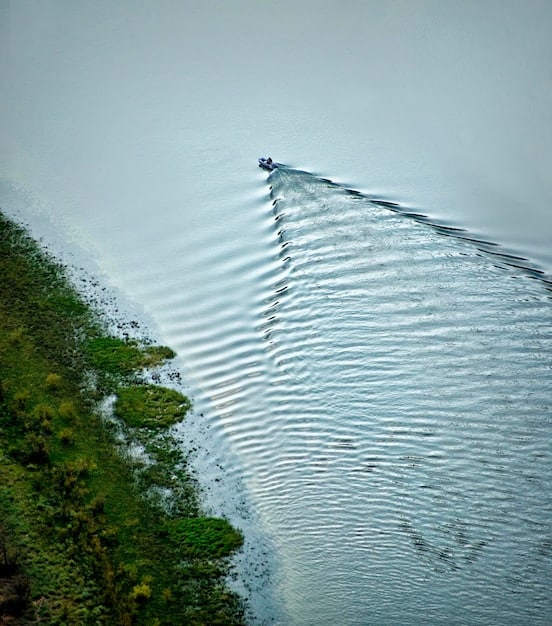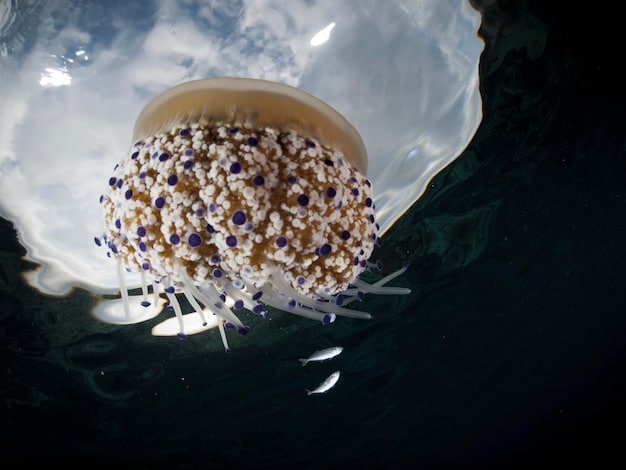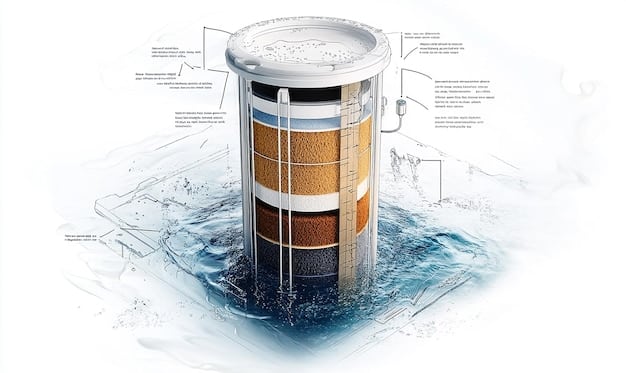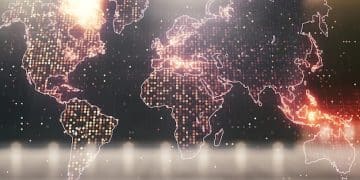The Fight for Clean Water: Are Regulations Strong Enough?

The adequacy of current regulations in safeguarding water resources is a complex issue, balancing industrial needs with environmental protection and public health, often requiring dynamic adjustments to address emerging contaminants and shifting environmental challenges.
The global challenge of securing clean water for all hinges significantly on the strength and enforcement of its regulatory framework. The fight for clean water: are current regulations strong enough to protect our resources? This question is not merely academic; it cuts to the core of public health, environmental sustainability, and economic prosperity.
Understanding the Current Regulatory Landscape
The regulatory framework governing clean water is a multifaceted tapestry of international agreements, national laws, and local ordinances, each aiming to establish standards, monitor compliance, and enforce actions to protect water quality. This layered approach recognizes that water issues transcend political boundaries and require collaborative solutions.
In many countries, foundational legislation like the Clean Water Act in the US serves as the bedrock, setting ambitious goals for water quality and providing agencies with the authority to implement programs for pollution control and wetland protection. These acts typically mandate permitting systems for pollutant discharges and establish water quality standards for various water bodies.
Key Regulatory Pillars
- Permitting Systems: These require industrial and municipal facilities to obtain permits before discharging wastewater into surface waters, limiting the type and quantity of pollutants.
- Water Quality Standards: Defined levels of pollutants that are permissible in oceans, rivers, lakes, and other water bodies, designed to protect aquatic life and human health.
- Enforcement Mechanisms: Provisions for penalties, litigation, and remediation efforts when violations of regulations occur, ensuring accountability.
Beyond these primary components, various specialized regulations address specific threats, such as those related to agricultural runoff, pharmaceutical contaminants, or microplastic pollution. The evolution of these regulations often lags behind scientific discovery and technological advancements, creating a continuous need for review and adaptation.
The sheer volume and complexity of these regulations present both opportunities and challenges. While they provide a comprehensive framework for protection, their implementation requires significant resources, expertise, and political will to be truly effective in the face of persistent and emerging threats to water quality.
Emerging Threats to Water Quality
While traditional pollutants like industrial waste and sewage remain significant concerns, new categories of contaminants are increasingly challenging the efficacy of existing water regulations. These emerging threats often originate from diffuse sources and can have subtle, long-term impacts on ecosystems and human health, making them particularly difficult to regulate and control.
Pharmaceuticals and personal care products (PPCPs) are a growing concern. Substances from painkillers and antibiotics to contraceptives and cosmetics find their way into water systems through human excretion and improper disposal, often passing through conventional wastewater treatment processes undetected. The long-term ecological impacts and potential health effects of chronic exposure to low levels of these compounds are still being thoroughly investigated.
Pervasive Contaminants
- Microplastics: Tiny plastic particles, often originating from synthetic clothing, packaging, or larger plastic degradation, are now ubiquitous in aquatic environments, posing risks to aquatic life and potentially human health through the food chain.
- Per- and Polyfluoroalkyl Substances (PFAS): Known as “forever chemicals,” PFAS are used in a wide range of products due to their water and stain-resistant properties. They are highly persistent in the environment and have been linked to various health issues, creating a major regulatory challenge due to their widespread presence and difficulty in removal.
- Nutrient Pollution: While not new, nutrient pollution from agricultural runoff and wastewater, leading to harmful algal blooms and dead zones, continues to be an escalating problem, exacerbated by climate change and intensive farming practices.

The challenge with these emerging contaminants lies not only in identifying their presence and understanding their impacts but also in developing cost-effective treatment technologies and regulatory strategies. Many current regulations were not designed with these novel pollutants in mind, leading to regulatory gaps and delays in effective action.
Addressing these threats requires a proactive approach that incorporates interdisciplinary research, innovative monitoring techniques, and adaptive regulatory frameworks. It also necessitates a shift towards source reduction and more sustainable consumption patterns to prevent these contaminants from entering the water cycle in the first place.
Regulatory Gaps and Enforcement Challenges
Despite comprehensive legal frameworks, significant gaps and challenges often hinder the full effectiveness of water quality regulations. These issues can stem from a variety of factors, including underfunding, insufficient monitoring, political interference, and the inherent difficulty of enforcing complex environmental laws across diverse landscapes.
One primary concern is the underfunding of regulatory agencies. Insufficient budgets can lead to reduced staffing, limited enforcement actions, and a backlog in permit renewals. This often translates into slower responses to pollution incidents and a diminished capacity to conduct thorough inspections and investigations, undermining the deterrent effect of regulations.
Persistent Hurdles
- Data Scarcity: A lack of comprehensive data on water quality, especially in remote areas or for certain emerging contaminants, makes it difficult to assess the true scope of pollution and prioritize regulatory actions.
- Jurisdictional Complexity: Water bodies often cross multiple political boundaries, leading to fragmented regulatory authority and coordination challenges among different levels of government and agencies.
- Non-point Source Pollution: While point source pollution (e.g., from factories) is relatively easy to regulate, diffuse non-point sources like agricultural runoff or urban stormwater are much harder to control effectively through traditional regulatory mechanisms.
Enforcement itself can be fraught with challenges. Legal battles over environmental regulations can be lengthy and expensive, often leading to settlements that may not fully achieve environmental remediation. Furthermore, penalties might not always be sufficient to deter repeat offenses, especially for large corporations. The political will to rigorously enforce regulations can also waver, particularly when facing pushback from powerful industries or economic interests.
Another critical area is the regulation of groundwater. While surface water is often well-monitored, groundwater, which supplies a significant portion of drinking water, can be more challenging to assess and protect from contamination due to its hidden nature and slow-moving pollution plumes. Addressing these gaps requires sustained investment, stronger interagency cooperation, and public pressure to ensure that regulations are not just on paper but are actively enforced to protect water resources.
The Role of Technology and Innovation
Advancements in technology and innovation are proving to be indispensable allies in the fight for clean water, offering new ways to monitor, treat, and conserve this vital resource. While regulations provide the framework, technology provides the tools to achieve and maintain water quality standards, often surpassing the capabilities of conventional methods.
Sophisticated sensor technologies, for instance, are revolutionizing water quality monitoring. These sensors can provide real-time data on a multitude of parameters, from pH levels and turbidity to the presence of specific contaminants, allowing for immediate detection of pollution events and more proactive management. This real-time data flow can significantly enhance the effectiveness of early warning systems and guide targeted interventions.
Technological Leaps for Water Protection
- Advanced Filtration Systems: Innovations like reverse osmosis, nanofiltration, and activated carbon filters are becoming more efficient and cost-effective, capable of removing even the most persistent and emerging contaminants from water sources.
- AI and Machine Learning: Artificial intelligence can analyze vast datasets from water monitoring systems to predict potential pollution risks, optimize treatment processes, and identify regulatory compliance issues with greater accuracy.
- Remote Sensing and Satellite Imagery: These technologies can monitor large areas for signs of environmental degradation, such as algal blooms or illegal dumping, providing critical information for regulatory enforcement and resource allocation.

Wastewater treatment facilities are also undergoing a technological transformation. Beyond traditional biological and chemical treatments, new processes are emerging that can recover valuable resources, such as nutrients or energy, from wastewater, transforming what was once a waste product into a circular economy opportunity. These innovations not only improve water quality but also contribute to greater resource efficiency and sustainability.
Furthermore, digital platforms are streamlining data management and communication among regulatory bodies, industries, and the public. These platforms can facilitate better reporting, enhance transparency, and empower communities to participate more actively in water stewardship. Embracing and investing in these technological advancements is crucial for overcoming the limitations of current regulatory approaches and ensuring the long-term protection of water resources.
International Cooperation and Global Water Governance
Given that water does not respect political borders, international cooperation and robust global water governance mechanisms are essential to address shared water challenges effectively. Transboundary rivers, aquifers, and shared marine environments necessitate collaborative efforts to manage resources equitably and protect them from pollution, particularly in the face of climate change and increasing demand.
International environmental agreements, conventions, and treaties play a critical role in setting global standards and fostering cooperation. Frameworks like the UN Watercourses Convention guide states in managing shared water resources, promoting principles of equitable and reasonable utilization, and obliging states to prevent significant harm to other riparian states. These agreements provide legal and diplomatic tools to resolve disputes and encourage joint management initiatives.
Pillars of Global Water Governance
- Transboundary Agreements: Bilateral and multilateral treaties focused on specific shared water bodies, setting rules for water allocation, pollution control, and joint monitoring.
- International Organizations: Bodies like the United Nations, World Health Organization (WHO), and various regional commissions provide platforms for dialogue, research, standard-setting, and technical assistance in water management.
- Capacity Building and Technology Transfer: Programs aimed at assisting developing nations in strengthening their water governance institutions, adopting sustainable practices, and implementing advanced water technologies.
Despite these efforts, challenges persist. Enforcement of international agreements can be difficult, as they often rely on voluntary compliance and lack strong supra-national enforcement powers. Geopolitical tensions, conflicting national interests, and differing levels of development can also complicate cooperative efforts, leading to unequal burdens and benefits.
Climate change further exacerbates these challenges, intensifying droughts and floods, altering precipitation patterns, and increasing the pressure on already scarce water resources. This necessitates even greater international collaboration to develop climate-resilient water management strategies and ensure water security for all. Strengthening global water governance requires continuous diplomatic engagement, shared scientific understanding, and a collective commitment to the principle that fresh water is a common heritage of humanity.
Public Awareness and Citizen Action
While regulations, technology, and international cooperation form the backbone of water protection, the engagement of the public and the power of citizen action are equally vital. Informed and active citizens can serve as powerful advocates for stronger regulations, hold polluters accountable, and adopt sustainable water practices in their daily lives, collectively influencing policy and shaping the future of water resources.
Public awareness campaigns, environmental education, and accessible information on water quality issues empower individuals to understand the value of clean water and the threats it faces. When communities are well-informed, they are more likely to support policies that protect water sources, participate in local conservation efforts, and demand accountability from industries and governments.
Catalysts for Change
- Community Science Initiatives: Citizen-led monitoring programs provide valuable data on local water quality, supplementing official monitoring efforts and identifying emerging issues.
- Advocacy and Lobbying: Environmental groups and concerned citizens can actively lobby legislative bodies, participate in public hearings, and rally for the adoption of more stringent water protection laws and better enforcement.
- Sustainable Lifestyles: Individual actions, such as reducing water consumption, properly disposing of household chemicals, and supporting businesses with strong environmental records, contribute significantly to broader water conservation efforts.
Legal avenues, such as citizen lawsuits under environmental protection acts, also provide a mechanism for the public to enforce regulations when governmental agencies fail to do so properly. These lawsuits can compel polluters to clean up contamination and pay for damages, acting as a critical check and balance.
However, promoting public awareness and action requires overcoming barriers such as misinformation, apathy, and feeling overwhelmed by the scale of environmental challenges. Effective communication strategies, accessible reporting of water quality data, and visible success stories of citizen action can inspire greater participation and ensure that the fight for clean water is a shared responsibility, not just one for regulators and experts.
| Key Aspect | Brief Description |
|---|---|
| ⚖️ Regulatory Strength | Regulations provide a framework, but gaps and underfunding hinder full effectiveness. |
| 🧪 Emerging Threats | New contaminants like PFAS and microplastics challenge existing treatment and regulatory capacity. |
| 💡 Technological Solutions | Advanced sensors, AI, and filtration systems offer new tools for monitoring and treatment. |
| 🤝 Global Cooperation | Transboundary issues require coordinated international efforts and shared governance. |
Frequently Asked Questions
▼
Enforcement faces challenges such as underfunding of regulatory agencies, leading to limited inspections and slow responses. Complex legal battles, insufficient penalties, and political interference also hinder effective implementation and deterrence against pollution.
▼
Emerging contaminants like PFAS and microplastics pose significant challenges because many existing regulations were not designed to detect or remove them. They are often persistent, widespread, and require new treatment technologies and adaptive regulatory frameworks, leading to regulatory gaps.
▼
Technology plays a crucial role through advancements in real-time monitoring sensors, advanced filtration systems like reverse osmosis, and AI/machine learning for predictive analysis. These tools enhance detection, treatment, and overall management of water resources beyond traditional methods.
▼
Public awareness drives citizen action, which is vital for stronger regulations and accountability. Informed communities support conservation, demand enforcement, and can even initiate legal actions against polluters. Individual sustainable practices also contribute to overall water protection.
▼
While international agreements like the UN Watercourses Convention provide frameworks for managing shared water bodies, their enforcement often relies on voluntary compliance. Geopolitical tensions and differing national interests can still complicate effective coordination and resource management, especially with climate change pressures.
Conclusion
The intricate dance between policy, science, and societal will defines the current state of water resource protection. While robust regulatory frameworks exist and technological innovations offer promising solutions, the ongoing battle against pollution is far from over. Emerging contaminants, enforcement hurdles, and the need for greater international collaboration underscore that current regulations, though foundational, are often stretched thin by a dynamic and complex environment. Ultimately, the future of clean water depends not just on stronger laws, but on sustained investment, adaptive governance, and a collective commitment from every stakeholder, transforming the fight for clean water into a shared victory.





